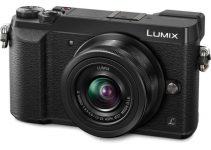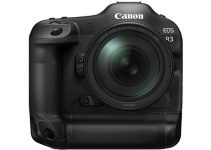If you’re one of those considering the option to sell your Panasonic GH4 and get the latest mirrorless low-light beast of Sony the A7S Mark II maybe you should take a look at the extensive video below first where the documentary and television shooter Jon Neely shares his experience on migrating to Sony’s ecosystem after using the GH4 for an extensive period of time. I’m quite sure that this video is going to create some vigorous debates on the topic, but the point here is not to specify which one of those cameras is better than the other.
Yet, it’s more like another first-hand opinion from a seasoned professional who put things into perspective for those willing to get as much information as possible in order to make the best buying decision based on strengths and weaknesses of both systems while performing in real world shooting scenarios.
Plus, it’s always great when we learn new things from experienced people who already had the chance to play around and shoot with a certain camera in the real world that can provide more in-depth and unbiased insights on the topic. Personally, I’m still a firm believer that the perfect camera still doesn’t exist, and there are just the right tools for the right job. Without further ado, let’s see what Jon Neely has to share with us.
We’ve heard this many times and we shouldn’t be surprised that in terms of video functionality and built-in features the GH4 is better optimized and more user-friendly oriented camera than the Sony A7S II. Sure, it’s really hard to compare a Micro 4/3 system with a Full Frame one, simply because both cameras are bringing a totally different aesthetics and look to the table.
It’s also true that the Sony cameras and the A7s II, in particular, are the absolute winners in terms of low light performance, but there are still many flaws on the video side that can be improved along with many video features that one can find on the GH4, but are totally absent from the Sony A7S and the A7S II.
Many of the drawbacks of the Sony A7S II that Jon Neely shares in his review are quite familiar to many videographers who already had the chance to test the system. The atrocious battery life, the complicated and tricky menu, the limited peaking, the weird placing of the record button are only a fraction of the challenges he already faced in his day-to-day workflow with both the Sony A7S and the Sony A7S II.
Yet, as a documentary shooter who often works in a low light environment, it seems that the Sony cameras are simply a no-brainer as they are leaps and bounds ahead in comparison to the GH4 in those terms. Dynamic range is another important consideration. The greatest thing about the A7S II is that even when utilizing the higher ISOs of the camera, you can still get a plenty of usable dynamic range whereas the GH4’s dynamic range decreases drastically when utilizing ISOs different than the camera’s native one.
At last, but not least, the built-in 5-axis image stabilization that the A7S II provides is another extremely useful feature, especially for run-and-gun situations and seems to be the perfect fit for documentary shooters like Jon who can now push the limits of their manual lenses relying on this stabilization at the same time.
The ability to get the best from both worlds is an extremely important and a huge selling point for the A7S II. This is something that definitely the A7S II users are going to miss on the GH4, especially once you get used to the 5-axis stabilization of the A7S II.
Still, the GH4 is going to give you the best bang for your buck considering all the video features it currently provides. But, if the Full Frame aesthetics, low-light capabilities, internal image stabilization and dynamic range are a top priority for your workflow than obviously the A7s II would be the better choice. In the end, no matter what system you are about to choose, it is always the same advice: go out, shoot, learn and always enjoy the process.
[source: Jon Neely]
B&H Order Links:
Lumix DMC-GH4 Mirrorless Micro Four Thirds Digital Camera (Body Only)
Sony Alpha a7S Mirrorless Digital Camera
Sony Alpha a7S II Mirrorless Digital Camera
Disclaimer: As an Amazon Associate partner and participant in B&H and Adorama Affiliate programmes, we earn a small comission from each purchase made through the affiliate links listed above at no additional cost to you.





It wold be a real problem if the 3+ times more expensive Sony A7s II wouldn’t be better than GH4 (which was under 998$ a couple of days ago).
The real question: is it 3+ times better or not?
Good question, Eno!
I just bought my 2nd A7sII because of how good it is. Sure it has flaws, but the pros outweigh the cons for me. It’s an amazing camera in a small package.
Glad to hear that, Steve!
As an owner of both (really all three since I have an original A7S as well) I would never consider selling my GH4. To me, that is the workhorse camera–the one I can always trust. I use the A7S II as a specialty camera for lowlight, especially for lowlight where I need to stop down. I always have my GH4 on hand and never lend it/rent it out. Meanwhile, I’ve paid off the A7S’s by renting them out to my higher end colleagues for lowlight specific shoots (when their F3s/F35s/amiras won’t quite cut it). It’s worth mentioning that the GH4 is actually great in lowlight by regular videography standards. If the A7S and the C100 had never come out, the GH4 would be considered a lowlight trooper. Put a speedbooster and a sigma 18-35 on the GH4 is a lowlight, bokeh-tastic champ. Stack it up against a Sony F3 and it holds its own.
And can’t miss features also worth mentioning on the GH4:
– Anamorphic! So awesome. Can’t wait to rent SLR Magic’s new 2x line-up and try that out. So far only used my two fiddly ebay projector converted lenses and even that looks very sleek and sexy.
– 10-bit hdmi output. It’s not raw. It doesn’t really make a crazy difference, but for 1/3 the price, it is 10-bit, where as the A7s/II is not.
– Videography friendly. So many video shooter related features make it much more like a true video camera and less like DSLR shooting.
As a final note, I believe a GH5 is not super far off in the future, and I believe the one feature Panasonic will have been working around the clock on above all others is lowlight. My bet: the GH5 will still be micro 4/3, still be 8 bit 4-2-0 internally, but they will have done some new back-illuminated circuitry voodoo with the biggest photosites they can, just so they can punch out the one remaining reason people buy A7S’s instead. Oh and maybe they’ll look at this 5 axis stabilizing thing. Who knows. Full frame? Who cares. S-Log? So 2014. Lowlight…the one word Panasonic R&D are so sick of hearing they’ll do some super crazy sensor innovation just to move on.